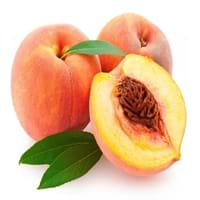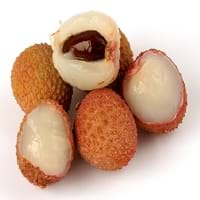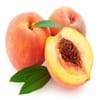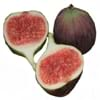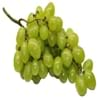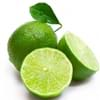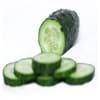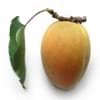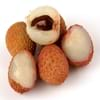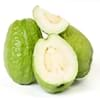Health Benefits
Cancer prevention, Heart care, Improves eye vision, Reduces stress, Regulation of heart rate
Cancer prevention, Cures gastro-intestinal troubles, Heart care, Muscle pain relief, Prevents blindness from diabetes
General Benefits
Anti oxidant properties, Eye care
Boosts immune system, Digestive aid, Fights against infections, Helps in weight loss, Maintains healthy cholesterol level, Strengthens bones
Skin Benefits
Heals sunburn, Reduces wrinkles, Treatment of skin diseases
Anti-aging benefits, Skin rejuvenation
Hair Benefits
Prevents hair loss
Promotes longer and healthier hair, Protects hair
Allergy Symptoms
Abdominal pains, Anaphylaxis, Breathing difficulty, Diarrhea, Dizziness, Hives, Itching, Lightheadedness, Nasal congestion, Nausea, Swelling of mouth, tongue or lips, Tingling sensation in mouth, Vomiting, Wheezing
Coughing, Diarrhea, Headaches, Hives, Itching, Labored Breathing, Nausea, Runny nose, Swelling of mouth, tongue or lips, Vomiting, Watery eyes
Side Effects
Allergic reaction
May cause abdominal pain, Diarrhoea, Mouth irritation, Throat irritation, Weight gain
Best Time to Eat
As a snack in the late afternoon, Eat the fresh ones, avoid mixing with any other foods, don't eat after meal., Morning time (before lunch)
As a snack in the late afternoon, Don't consume at night and before bed, Eat the fresh ones, avoid mixing with any other foods, don't eat after meal., Morning time (before lunch), Strictly avoid empty stomach
Vitamin B5 (Pantothenic Acid)
Vitamin C (Ascorbic Acid)
Vitamin K (Phyllochinone)
Phytosterol
Not Available
Calories in Fresh Fruit with Peel
Not Available
Calories in Fresh Fruit without Peel
Not Available
Type
Tree fruit
Tree fruit, Tropical
Season
Autumn, Summer
Spring, Summer
Varieties
Reliance, Sweet Scarlet, Spring Snow, Sugar May, Santa Rosa, Red Beauty, Glowhaven, Cresthaven and Redhaven Peaches
Emperor fruit, Mauritiu, Sweet Heart, Brewster, Haak Yip and Bengal
Color
Pink, Red, White, Yellow, Yellowish-orange
Bright red, Pink red
Inside Color
Yellow
Greyish-white
Taste
Sweet
Crunchy, Juicy, Sweet
Origin
China
China, Indonesia, Philippines, Vietnam
Soil Type
Sandy loam, Well-drained
Alluvial, Loam, Well-drained
Climatic Conditions
Cold, Warm
Absence of strong wind, Cold, Dry, Without frosts
Facts about
- In china, peaches are considered as a symbol of good luck.
- From 1982, august is National peach month in USA.
- In roman times, Peaches were also called as Persian apples, as people assumed that they originated from Persia.
- The seed of Lychee fruit is toxic & can adversely affect the digestive system.
- This fruit gives a smoky flavor when eaten dried.
- This fruit is a symbol of love and romance in China.
Other Countries
Greece, Italy, Spain, United States of America
Australia, India, South Africa, Thailand, United States of America
Top Importer
Germany
Hong Kong
Botanical Name
Prunus persica
Litchi chinensis
Synonym
Not Available
Nephelium litchi
Subkingdom
Tracheobionta
Tracheobionta
Division
Magnoliophyta
Magnoliophyta
Class
Magnoliopsida
Magnoliopsida
Family
Rosaceae
Sapindaceae
Species
P. persica
L. chinensis
Generic Group
Rose
Soapberry
Difference Between Peach and Lychee
We might think that Peach and Lychee are similar with respect to nutritional value and health benefits. But the nutrient content of both fruits is different. Peach and Lychee Facts such as their taste, shape, color, and size are also distinct. The difference between Peach and Lychee is explained here.
The amount of calories in 100 gm of fresh Peach and Lychee with peel is 39.00 kcal and Not Available and the amount of calories without peel is Not Available and 66.00 kcal respectively. Thus, Peach and Lychee belong to Low Calorie Fruits and Low Calorie Fruits category.These fruits might or might not differ with respect to their scientific classification. The order of Peach and Lychee is Rosales and Sapindales respectively. Peach belongs to Rosaceae family and Lychee belongs to Sapindaceae family. Peach belongs to Prunus genus of P. persica species and Lychee belongs to Litchi genus of L. chinensis species. Beings plants, both fruits belong to Plantae Kingdom.
